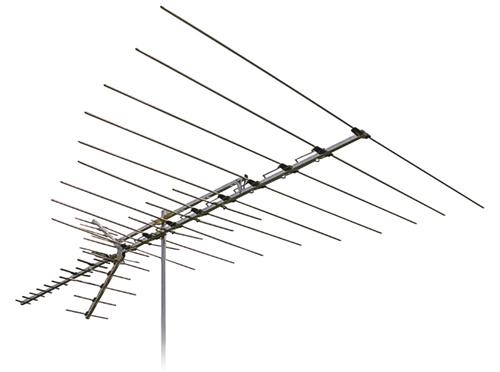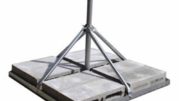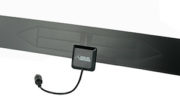Cord-cutting is certified national phenomenon. You may have thought TV antennas were a relic from the 1970s, but nothing could be further from the truth. Every day, thousands of people make the choice to save money by putting up a TV antenna. TV antennas can give you dozens of channels for free and let you watch major sporting events and all the top rated shows live. Put up an antenna and there’s nothing more to pay, ever.
But, the funny thing is, there’s still some confusion about how to install an antenna. Just the other day a customer came to me and asked for a visual guide on how to point every single antenna we have.
That might be a bit much for a single article, but here’s a visual guide to the most common types of antennas and how to point them.
Which direction should you point?
As a general rule, point the antenna toward a major city. If you need to be more precise than that, check out a self-service site like TVFool, use an app like the Winegard Signal Finder, or get a full recommendation from our technicians for free. But knowing where to point the antenna is only half the battle. The other half is knowing how to point at all.
Traditional yagi-style antennas
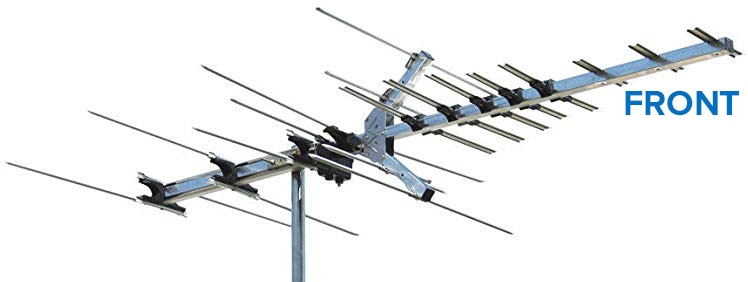
This traditional-looking antenna is the one that’s really hardest to point. I’ve chosen this model, the Winegard HD7694P, because it looks confusing and I’ve seen it mispointed a number of times.
With a traditional antenna you want to look for the narrowest point. That is going to be the front. The longest elements (the horizontal poles) are going to be toward the back.
You can also look for posts that come up and down from the main “boom”. The top and bottom of these posts should point toward the front. That’s another way to make sure you’re pointing right.
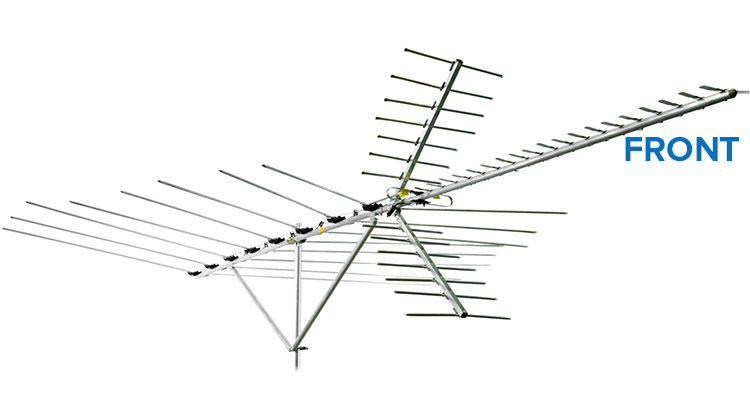
It’s easy to get confused with an antenna like this discontinued model. The back elements actually fan toward the front. I know that doesn’t seem like it makes sense, but it does. Again, look at where the smallest elements are. Also, look at the reflectors (the posts that come up and down) to make sure that the top and bottom point toward the front.
Hybrid/modern antennas
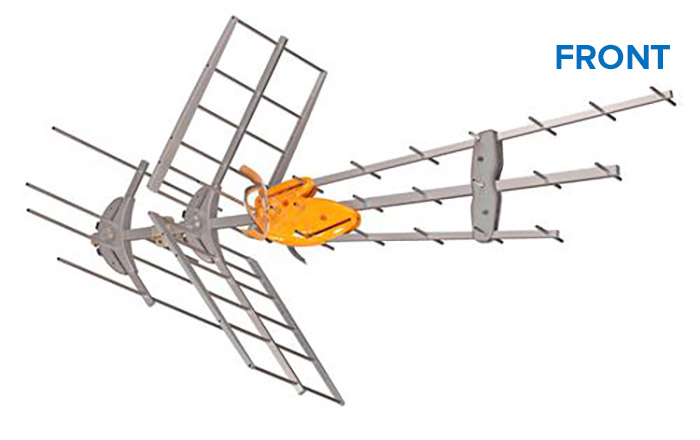
Antennas like this Televes DATBOSS Mix are very popular because they have the same performance as much larger antennas and yet they have a more compact and modern design. But, at their hearts, these antennas follow the same rules as other yagi-style antennas. The small part is at the front, and the top and bottom of the reflectors point toward the front.
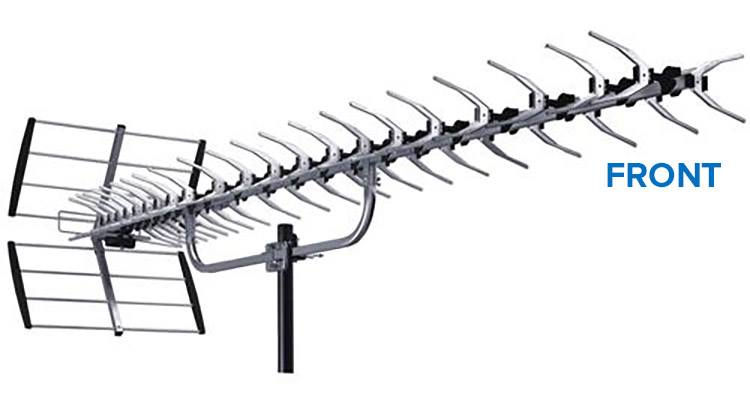
The same applies to our Xtreme Signal HDB91X antenna. Small part toward the front, top and bottom of the reflectors point toward the front.
Bowtie antennas
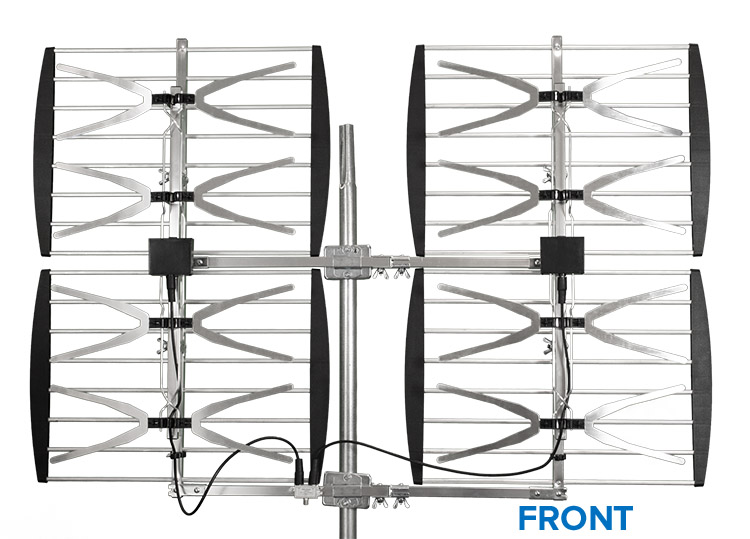
Bowtie antennas like this Xtreme Signal HDB8X are perfect for people with limited space who don’t need strong VHF performance. Here’s another one, the Winegard Elite 7550.
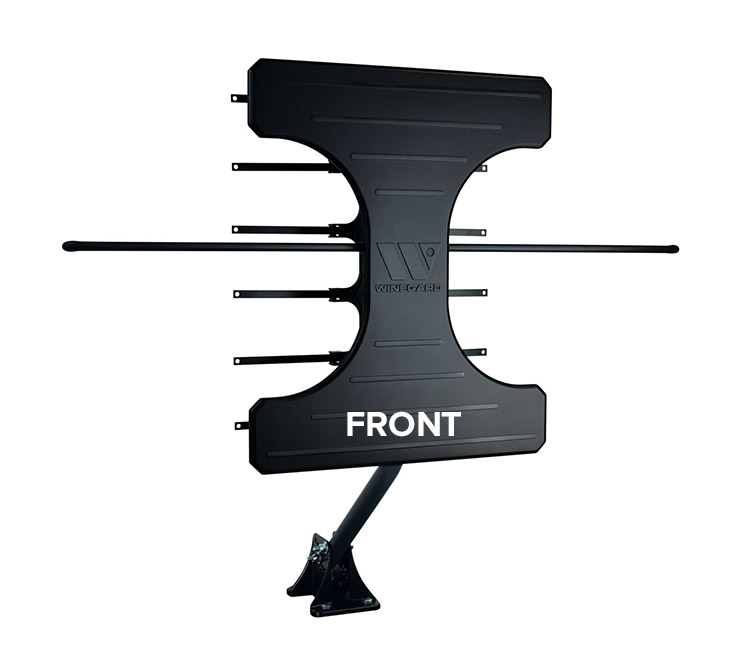
This sort of antenna generally has two main parts. There is the receiving element, which can be shaped like a circle, an “X,” or a bowtie. And, there are horizontal bars which act as a reflector and bounce signal to the back of the antenna.
In every case, the horizontal bars go in the back. That’s the easiest way to know you have this aimed right. This sort of antenna is going to be very forgiving in aiming, but if you want a perfect aim, put the receiving element at 90 degrees to the tower you’re pointing at. This is a little hard to show on a 2D screen unfortunately.
Panel antennas

This is the hardest type of antenna to understand. This Antop AT-403B is a perfect example. Under all that plastic is a more traditional antenna, but the smooth box that you see doesn’t give you a lot of clues.
As a general rule, the back of the antenna will have mounting hardware and that’s usually where you’ll find the cable connection. Here’s what the back of that antenna looks like:
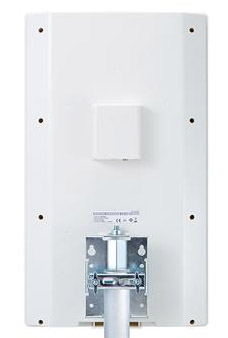
So, if all you see is a smooth face, that’s probably the front and should be pointed toward the towers.
Omni antennas

Antennas that look like a UFO, like this Antop model, are omnidirectional and don’t need pointing at all. Just put them up with a view of the sky and you’re done. Sometimes this type will look like a bullet facing up, like this one:
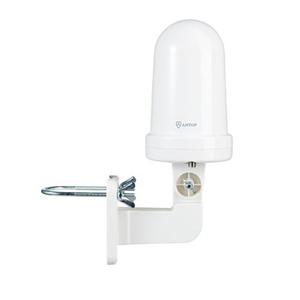
Again, you don’t need to do anything to aim them.
Need more help?
Check out our self-service Facebook group! Post a picture of your antenna and we’ll help you figure out how to aim it. If you don’t have an antenna yet, check out the great selection at Solid Signal!

